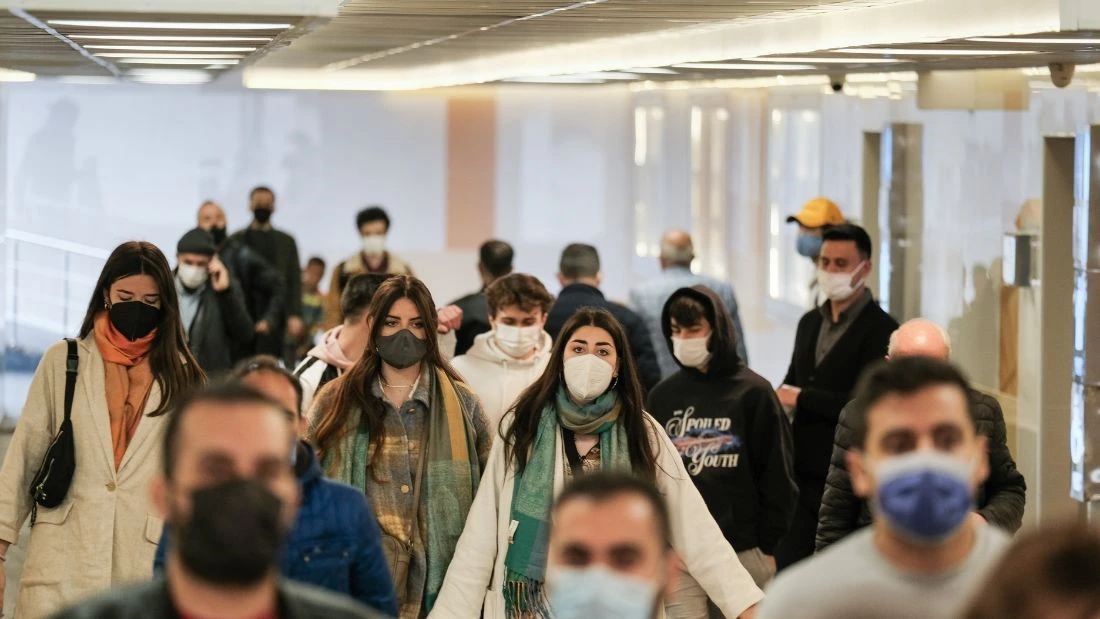Bird flu now spreading in mammals

Scientists fear we are now one step closer to a bird flu pandemic following the news that the avian influenza virus H5N1 has spread through the entire population of mink in a Spanish mink fur farm.
You may remember that early during the covid pandemic, the SARS-CoV-2 coronavirus jumped from humans to farmed mink and then back to humans. Scientists looking at the virus found that it evolved in farmed mink leading to the emergence of SARS-CoV-2 mink-associated variants which spread between mink, infected humans and then spread in the community.
The first report of farmed mink being affected was in the Netherlands in April 2020, just a month after the pandemic was declared. Subsequent outbreaks on mink fur farms were reported in Denmark, Spain, France, Italy, Sweden, Canada, Greece, Lithuania, Poland and the US. It turns out that SARS-CoV-2 spreads easily from humans to mink. By the end of January 2021, infections had been recorded in 400 farms and millions of animals were culled to try and limit disease spread.
The crowded, stressful and filthy conditions on intensive mink fur farms make them the perfect breeding ground for infectious diseases just as the factory farms that house chicken, pigs and dairy cows are too – Viva! has exposed the horrific conditions in these places time and time again and factory farms, particularly those associated with poultry, are a major contributor to the global spread of bird flu.
Fast forward to the end of January 2023 and we are witnessing another highly pathogenic disease jumping species. This time it’s bird flu – the disease that many scientists think will be the cause of the next global pandemic.
When mink at a large fur farm in Spain started to die in October 2022, vets initially thought the culprit was SARS-CoV-2 again. But lab tests revealed something even scarier: the deadly avian influenza virus H5N1. Authorities placed farm workers under quarantine and 50,000 mink at the farm were killed.
What’s causing concern in the scientific community is that the virus appears to have spread from mink to mink. This is the first evidence of the bird flu virus being easily transmitted between mammals. The outbreak, described in a paper in Eurosurveillance last week, has reignited fears that H5N1 could trigger a human pandemic.
Previously, H5N1 has not been able to spread well between mammals; people mostly catch it from handling infected or dead birds, not one another. But now, it appears to have spread through a densely packed group of mammals and gained at least one mutation that favours mammal-to-mammal spread.
Scientists warn that H5N1, now rampaging through birds around the world, including in the UK, could infect other mammals and become still more transmissible. “This is incredibly concerning” says Tom Peacock, a virologist at Imperial College London. “This is a clear mechanism for an H5 pandemic to start.” Isabella Monne, a veterinary researcher at the European Union’s Reference Laboratory for Avian Influenza in Italy, where the samples from Spain were sequenced, calls the finding “a warning bell.”
A further development is that in the UK, during the largest-ever outbreak, the virus here is spilling over into mammals too, including otters and foxes. Professor Ian Brown, director of scientific services at the UK’s Animal and Plant Health Agency (APHA) said: “The virus is absolutely on the march. And it’s almost remarkable – it’s a single strain” he said, adding that greater international action to tackle its spread was needed. He told the BBC he was “acutely aware of the risks” of avian flu becoming a pandemic.
Founder and Director of Viva!, Juliet Gellatley says: “Having just been through a pandemic, you’d hope the world would act differently towards animals… to end fur farming, factory farming and wildlife exploitation with urgency. We are playing with fire.”
Find out more about our campaign to end factory farming here: viva.org.uk/animals/campaigns/end-factory-farming-before-it-ends-us.




